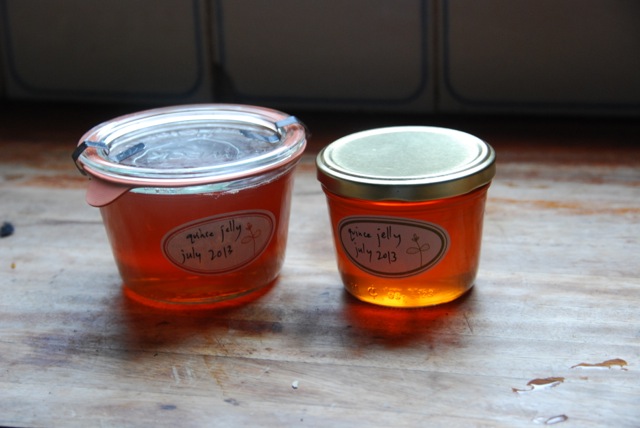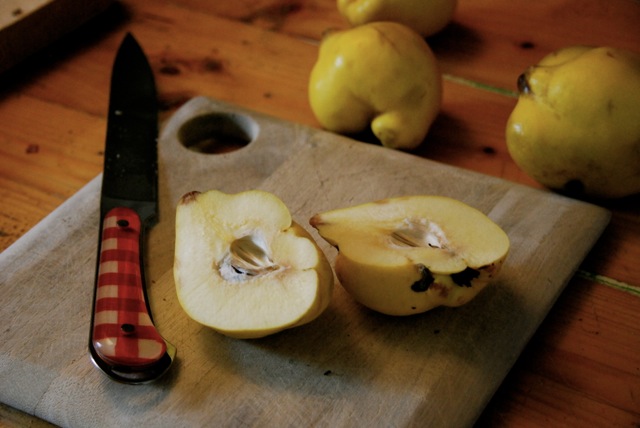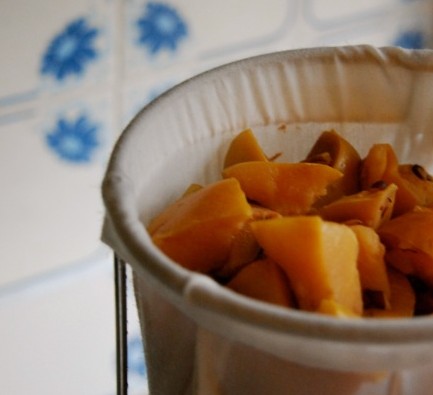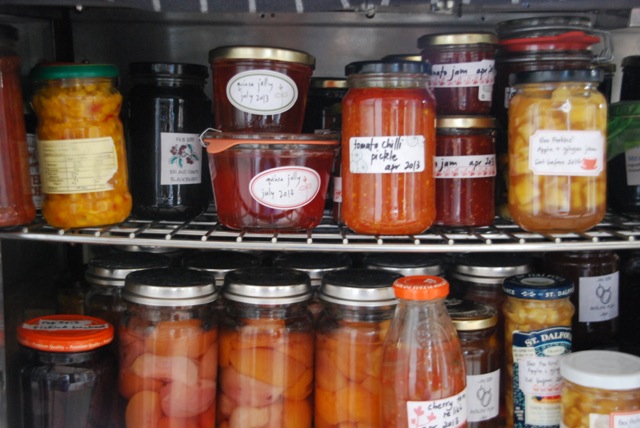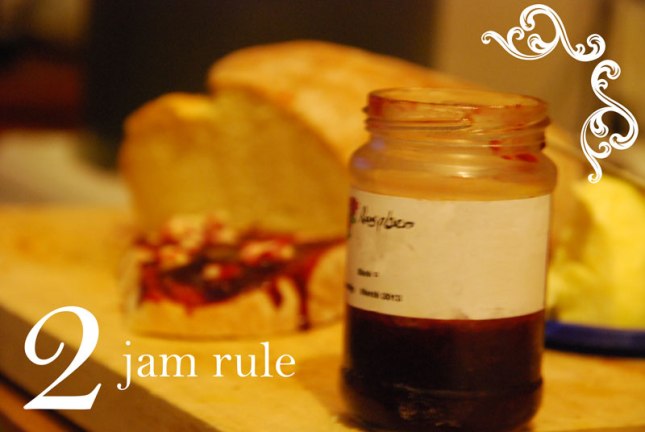The hardest thing about making quince jelly is getting your face off the quince. Quince smells so good. It’s a bit silly how good it smells. I can’t think of a single, suitable word to describe it. Some people call it ‘floral’ but I’m not sure that’s enough.
We found a kilo bag of quince going cheap at our grocer, and after checking it for that important and mysterious smell, and deciding that we can live with the few bruises it had, it was snapped up.
After a few days of leaving the quince in the kitchen like a bunch of flowers, I decided to go ahead and make jelly.
But I fell for the same trick as usual. This is the trick where you think you will get heaps of jam and then you only get a few jars. I thought a kilo would make a reasonable output? No. I got two jars of quince jelly. Two jars!!
[Sad trombone noise]
I’m almost positive that no jam recipe has ever yielded what it is meant to. How rude.
The paucity of my result is nothing against this recipe though. Because I should say I chose this recipe for a good reason. It is a real life recipe.
What I mean by real life recipe is this. When I buy bits of food in order to preserve it, I never seem to buy 1.7 kg of quince, or 4 cups of chopped quince, or 20 kilos of quince, or whatever our preserving books tend to arbitrarily demand. But this recipe, this wonderfully practical recipe, gives you a ratio of sugar to strained quince juice. And that sir, is the business.
(Just take it from me, and use more than a kilo of fruit).
Quince Jelly
Variation on the Apple and herb jelly by Pam Corbin, River Cottage Handbook No. 2.
Ingredients are Just quince and sugar. (Check for the inimitable smell)
1. Chop up the quince. No need to peel or core.
2. Put in a pot for cooking jam in, cover with water. At this point you could add something like cinnamon or cloves if you wanted some spice flavour.
3. Bring to a boil, then simmer until fruit is nice and soft. For me with 1kg this was about 1.5 hours.
4. Strain and keep juice. If you have a jelly bag setup, go for it. Feed the quince scraps to your chickens.
5. Maths time. Sorry, but this is where the ratio comes in. For each 600ml of liquid you have, get 450g of sugar.
6. Put the quince juice and the sugar back on heat, and return to the boil until reaching setting point. I like the wrinkle test best.
7. Pour into sterilised jars. Probably not as many as you thought you would need.
We generally leave any preserves on a wooden counter, or bread board, at least overnight before moving them into the preserve cupboard. It’s something to do with getting a good seal. Haha. is it possible to use the word seal without imagining the marine seal? Nope.
Would you look at that. I always dreamt of having a cupboard full of preserves in beautiful colours. Aim high in life!
